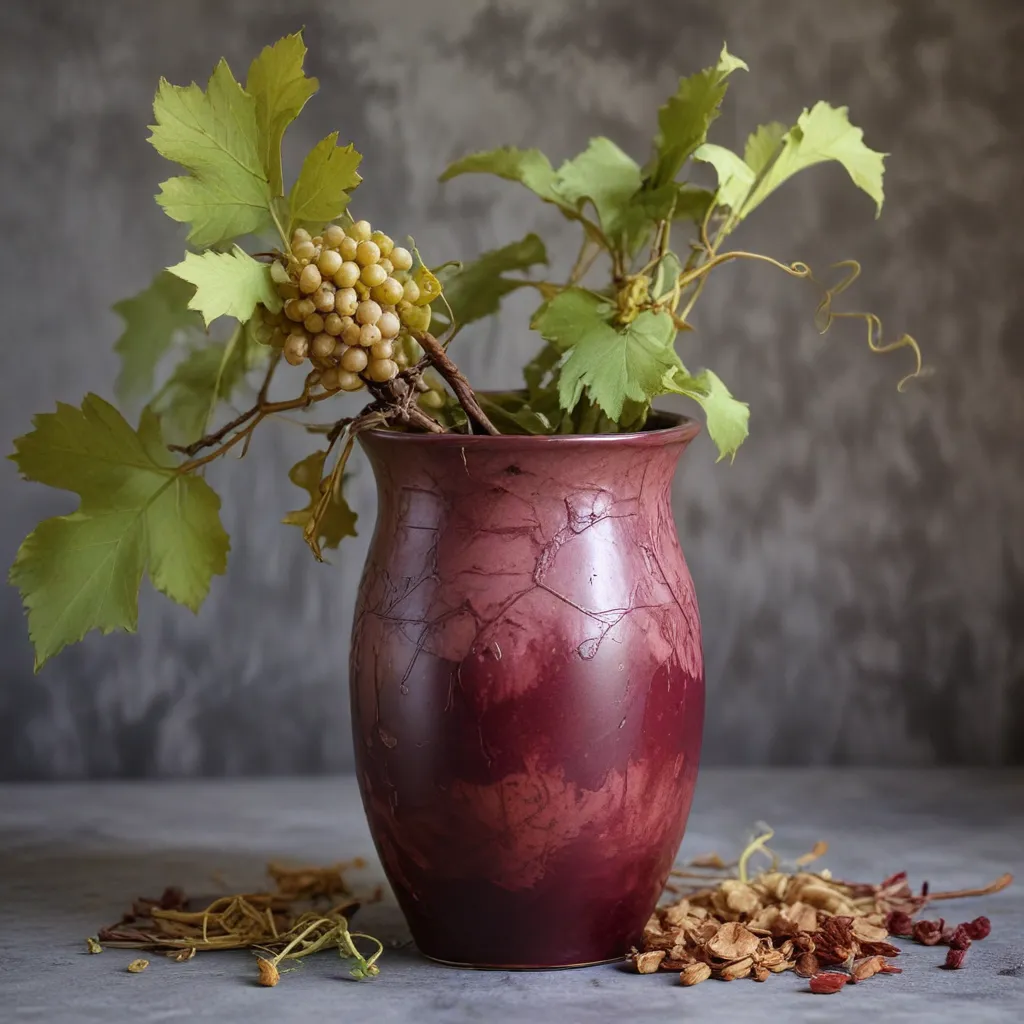
At Wine Garden Inn, we’re passionate about maximizing the versatility of every part of the grape. While the fruit itself takes center stage in our award-winning vintages, the often-discarded stems and skins deserve a spotlight too. These byproducts can be transformed into vibrant, sustainable dyes – a practice deeply rooted in history yet ripe for a modern revival.
Grape Stem Utilization
After harvesting our grapes, you’ll find our winemaking team meticulously tending to the vines, carefully pruning the spent grape stems to promote next year’s growth. Rather than composting or discarding these cuttings, we’ve discovered an ingenious use: natural dyeing. The stems contain a wealth of pigments and tannins that, with a bit of preparation, can create a stunning array of earthy hues.
Grape Skin Repurposing
An equally valuable byproduct is the grape skins that remain after pressing. Typically, these skins would be composted or fed to livestock – but we’ve found they hold the key to an even broader spectrum of natural colors. From deep indigos to vibrant fuchsias, the skins of our estate-grown grapes are a veritable treasure trove for the eco-conscious crafter or textile artist.
Dyeing Techniques
To harness the dye potential of grape stems and skins, we employ a variety of traditional and modern techniques. Simmering the materials in water extracts the pigments, which can then be applied directly to fabrics, fibers, or paper. Mordanting – the process of treating the material with a binding agent like alum or iron – helps the dyes adhere more vividly and lastingly. We also experiment with fermentation, creating rich, complex colors through microbial action.
Natural Dye Extraction
Grape Stem-Based Dyes
Our winemaking team carefully collects the pruned grape stems, chopping them into smaller pieces to increase their surface area. We then submerge the stems in water and simmer the mixture for several hours, allowing the tannins and pigments to leach out. The resulting dye bath can range from pale golden hues to deep, earthy browns, depending on the grape variety and extraction time.
Grape Skin-Based Dyes
The grape skins left over from our winemaking process are a trove of natural color. We spread them out to dry, then grind them into a fine powder using a high-powered blender. Simmering this powder in water yields a spectrum of vibrant hues, from soft pinks and lavenders to vivid plums and indigos. The specific color depends on factors like the grape variety, fermentation process, and pH levels.
Dye Mordanting
To ensure our natural dyes adhere well to the fibers and materials we work with, we employ various mordanting techniques. Soaking the fabric or yarn in a solution of alum, iron, or even tannin-rich tea can significantly improve the dye’s longevity and vibrancy. We experiment with different mordant combinations to create unique, layered effects.
Sustainable Fashion and Textiles
Eco-Friendly Dye Applications
Using grape byproducts as the foundation for our natural dyes aligns perfectly with Wine Garden Inn’s commitment to sustainability. These dyes are not only environmentally friendly, but they also lend a distinctive, artisanal quality to the textiles and materials we incorporate into our hospitality offerings. From the napkins gracing our tables to the throw pillows in our guest rooms, the colors and patterns reflect the bounty of our vineyard.
Circular Economy Principles
By repurposing otherwise discarded grape stems and skins, we embrace the principles of a circular economy – minimizing waste, maximizing resource use, and closing the loop. This approach not only reduces our environmental impact but also imbues our products with a unique, place-based character that resonates with our eco-conscious guests.
Artisanal Dye Production
Our natural dyeing process is a hands-on, artisanal endeavor, with our team meticulously experimenting to perfect each hue. We take pride in the distinctive variations and subtle imperfections that emerge, a reflection of the living, responsive nature of these plant-based dyes. This artisanal touch elevates the textiles, ceramics, and other materials we incorporate into the Wine Garden Inn experience.
Environmental Impact Reduction
Waste Minimization Strategies
At the core of our natural dyeing efforts is a deep commitment to waste reduction. By diverting grape stems and skins from the compost or landfill, we’re able to extract maximum value from our vineyard byproducts. This aligns with our broader sustainability initiatives, which aim to minimize our environmental footprint across all aspects of our operations.
Closed-Loop Manufacturing
Our natural dyeing process exemplifies the principles of a closed-loop manufacturing system. The dyes are produced entirely from our own grape waste, and the resulting textiles and materials are carefully incorporated back into our hospitality offerings. This circular approach minimizes the need for resource-intensive and polluting commercial dyes, while also reducing our reliance on outside suppliers.
Regenerative Agriculture
Underlying our natural dyeing efforts is a dedication to regenerative agriculture – farming practices that not only sustain but actively improve the health of our vineyard ecosystem. By maintaining a vibrant, diverse population of plants, microbes, and other organisms, we’re able to draw on a wealth of untapped resources, like the pigments and tannins in our grape byproducts. This holistic approach to resource management aligns with our mission to be good stewards of the land.
As you explore the Wine Garden Inn, you’ll find the fruits of our natural dyeing labors woven throughout the experience. From the vibrant tablecloths in our restaurant to the cozy throws in our guest suites, each piece tells a story of sustainability, craftsmanship, and a deep connection to the land. We invite you to discover the beauty that can bloom from our vineyard’s byproducts – a testament to the power of whole-plant utilization and closed-loop thinking.
